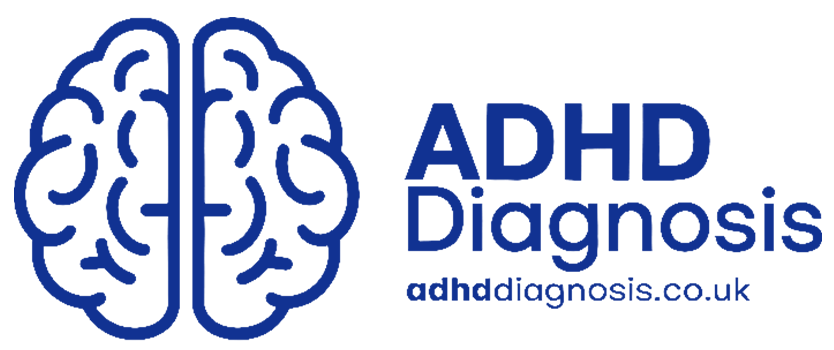Introduction
Attention Deficit Hyperactivity Disorder (ADHD) is a common neurodevelopmental condition that affects both boys and girls in the UK. However, the way ADHD presents in boys and girls can be very different — leading to significant disparities in diagnosis, treatment, and support.
While boys are more frequently diagnosed with ADHD, research shows that girls are often underdiagnosed or misdiagnosed due to the subtler nature of their symptoms. Understanding these differences is essential for improving recognition, support, and outcomes for both boys and girls with ADHD.
In this blog, we’ll explore the key differences in how ADHD affects boys and girls, including symptom presentation, diagnosis rates, and treatment approaches in the UK.
Understanding ADHD
ADHD is a brain-based condition that affects:
- Attention and focus
- Impulse control
- Emotional regulation
- Hyperactivity
ADHD is divided into three main types:
- Inattentive Type – Difficulty focusing, forgetfulness, and trouble following instructions.
- Hyperactive-Impulsive Type – Excessive energy, restlessness, and acting without thinking.
- Combined Type – A mixture of both inattentive and hyperactive-impulsive symptoms.
Boys and girls tend to display different patterns of these symptoms, which is why ADHD can look very different depending on gender.
1. ADHD Diagnosis Rates in Boys vs. Girls in the UK
ADHD is more commonly diagnosed in boys than girls.
- In the UK, boys are three to four times more likely to be diagnosed with ADHD than girls.
- However, research suggests that ADHD is underdiagnosed in girls due to differences in symptom presentation.
Why Boys Are Diagnosed More Frequently:
✅ Boys are more likely to display hyperactive and impulsive behaviours, which are more noticeable and disruptive in classroom and social settings.
✅ Teachers and parents are more likely to recognise hyperactivity and impulsiveness as signs of ADHD.
Why Girls Are Often Underdiagnosed:
✅ Girls are more likely to have inattentive-type ADHD — which presents as daydreaming, forgetfulness, and trouble focusing rather than hyperactivity.
✅ These symptoms are less disruptive and can be mistaken for personality traits (e.g., “quiet,” “shy,” or “disorganised”).
✅ Girls are more likely to internalise their struggles, leading to misdiagnosis as anxiety or depression.
👉 As a result, many girls with ADHD go undiagnosed until adolescence or adulthood.
2. Symptom Differences in Boys and Girls with ADHD
ADHD symptoms often manifest differently in boys and girls due to biological, social, and behavioural differences.
How ADHD Presents in Boys:
- More likely to show externalised symptoms such as:
- Hyperactivity (e.g., fidgeting, climbing, running)
- Impulsiveness (e.g., interrupting conversations)
- Aggression or defiance
- More prone to behavioural issues at school
- More likely to receive early referrals due to disruptive behaviour
How ADHD Presents in Girls:
- More likely to show internalised symptoms such as:
- Daydreaming or appearing “spaced out”
- Trouble staying organised
- Low self-esteem and sensitivity to criticism
- Anxiety and social withdrawal
- More prone to emotional dysregulation (e.g., mood swings, frustration)
- More likely to be labelled as anxious, depressed, or emotional rather than having ADHD
👉 Girls with ADHD are often overlooked because their symptoms are more subtle and less disruptive.
3. Emotional and Social Impact of ADHD on Boys vs. Girls
ADHD affects not only academic performance but also emotional health and social relationships.
Impact on Boys:
- Boys with ADHD are more likely to face:
- Peer rejection due to hyperactive or impulsive behaviour
- Higher rates of disciplinary action at school
- Increased risk of developing oppositional behaviour or conduct disorders
- Boys may struggle with frustration, anger, and emotional outbursts.
Impact on Girls:
- Girls with ADHD are more likely to face:
- Low self-esteem and feelings of inadequacy
- Social isolation or difficulty making friends
- Increased risk of developing anxiety, depression, and eating disorders
- Girls are more prone to masking their symptoms — consciously or unconsciously hiding their difficulties to fit in socially.
👉 Because girls’ symptoms are often overlooked, they are at higher risk of developing mental health issues as they grow older.
4. Academic and Professional Differences
ADHD can have a significant impact on academic and career performance, but boys and girls often face different challenges.
Challenges for Boys:
- Disruptive behaviour often leads to poor academic performance.
- Boys are more likely to struggle with time management and task completion.
- Hyperactivity and impulsiveness can make it difficult to follow school rules.
Challenges for Girls:
- Inattention and disorganisation may lead to incomplete assignments.
- Girls with ADHD may perform well in school but struggle with executive functioning (e.g., planning and organisation).
- High emotional sensitivity can lead to test anxiety and stress.
👉 Because girls’ ADHD symptoms are less visible, their struggles are often attributed to personality traits rather than ADHD.
5. Differences in Treatment Approaches
Treatment for ADHD should be tailored to the individual’s symptoms and needs — but boys and girls may respond differently to certain approaches.
Medication:
- Stimulant medications like methylphenidate (Ritalin) and amphetamine (Adderall) are effective for both boys and girls.
- However, boys are more likely to be prescribed medication because their symptoms are more noticeable.
Therapy:
- Cognitive Behavioural Therapy (CBT) is effective for both boys and girls, helping with emotional regulation and executive functioning.
- Girls may benefit more from therapy that addresses emotional and social difficulties.
Lifestyle Adjustments:
- Regular exercise can help reduce hyperactivity and improve focus.
- Creating structured routines helps both boys and girls manage time and tasks more effectively.
- Mindfulness and relaxation techniques can help with emotional regulation, especially for girls.
👉 Girls often require more emotional support, while boys may need more help with impulse control and behaviour management.
6. Why Understanding the Differences Matters
Recognising how ADHD affects boys and girls differently is crucial for improving diagnosis and treatment.
✅ More accurate diagnosis reduces the risk of misdiagnosis (e.g., girls being diagnosed with anxiety instead of ADHD).
✅ Tailored treatment plans lead to better academic, social, and emotional outcomes.
✅ Early intervention helps reduce the long-term impact of ADHD on mental health and relationships.
Conclusion
ADHD affects both boys and girls in the UK, but the way it presents and is recognised can differ significantly. Boys are more likely to be diagnosed early due to obvious hyperactive and impulsive behaviour, while girls are often overlooked due to quieter, more internalised symptoms.
By understanding these differences, parents, teachers, and healthcare professionals can better recognise ADHD in both boys and girls — ensuring that all children receive the support and treatment they need to thrive.
Need Help with ADHD?
If you think you or someone you know may have ADHD, seeking professional guidance is crucial. Early diagnosis and treatment can significantly improve focus, emotional regulation, and overall quality of life.👉 Book an ADHD assessment with ADHDDiagnosis.co.uk to take the first step towards understanding and managing ADHD effectively.






